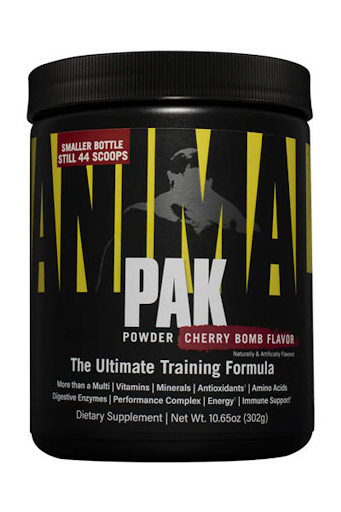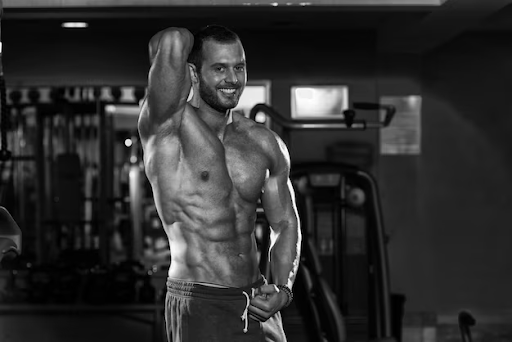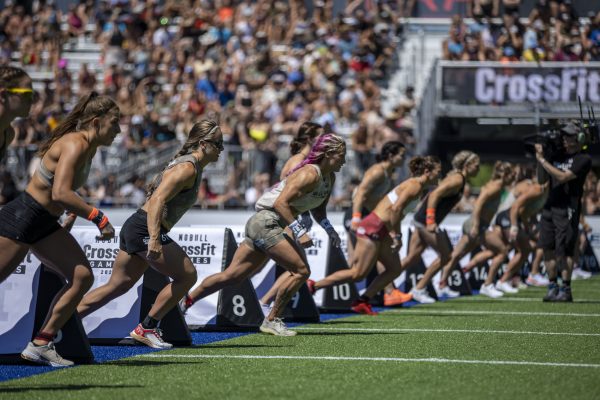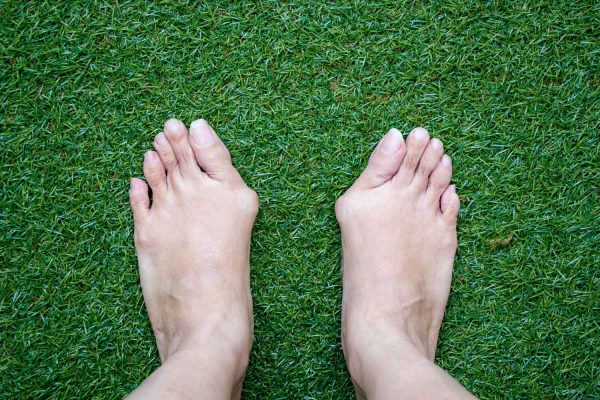Athletes are known for their dedication to peak physical performance, pushing their bodies to the limit to achieve greatness in their respective sports. However, there are times when athletes, like anyone else, may have the need or desire to shed some extra pounds. Whether it’s to meet weight-class requirements, improve agility, or enhance overall health, weight loss for athletes presents a unique set of challenges and considerations.
In this comprehensive guide, we will navigate the intricate terrain of weight loss specifically tailored to athletes. We’ll delve into the nuances of shedding excess weight while maintaining performance, and explore the science-backed strategies that can help athletes achieve their goals safely and effectively.
From understanding the diverse goals athletes have in different sports to deciphering the role of supplements like those by Universal Nutrition, to training, and mental resilience, we’ll provide you with the knowledge and tools to embark on a weight loss journey that aligns with your athletic pursuits. This guide isn’t just about shedding pounds; it’s about optimizing your body for peak performance while respecting your health and well-being.
So, whether you’re a professional athlete, a weekend warrior, or someone looking to improve their fitness level, join us as we unravel the Weight Loss Guide for Athletes and set you on a path towards a healthier, fitter, and more agile you.
Table of Contents
Different Goals for Different Sports
Athletes come in various shapes and sizes, and the weight loss goals of each athlete may vary significantly depending on the sport they participate in. It’s crucial to recognize that different sports demand different body compositions. Here’s a breakdown of how weight loss goals can differ by sport:
Endurance Athletes (e.g., distance runners, cyclists):
- Goal: Enhance aerobic capacity and endurance.
- Weight Loss Strategy: Focus on optimizing body composition by reducing body fat while maintaining lean muscle mass.
Strength and Power Athletes (e.g., weightlifters, powerlifters):
- Goal: Maximize strength and power.
- Weight Loss Strategy: Carefully manage weight loss to ensure minimal impact on muscle mass and explosive strength.
Combat Sports Athletes (e.g., boxers, MMA fighters):
- Goal: Meet weight class requirements while preserving strength and stamina.
- Weight Loss Strategy: Employ short-term weight cutting methods, such as dehydration and diet manipulation, while prioritizing rapid post-weigh-in recovery.
Team Sports Athletes (e.g., basketball, soccer):
- Goal: Maintain optimal agility and endurance.
- Weight Loss Strategy: Focus on balanced nutrition and body composition to meet team-specific requirements.
Aesthetic Sports Athletes (e.g., gymnastics, figure skating):
- Goal: Achieve a specific aesthetic or body appearance.
- Weight Loss Strategy: Combine tailored training routines with nutrition plans to achieve the desired physique.
Understanding the unique demands of your sport is crucial for setting realistic weight loss goals and strategies that align with your athletic performance objectives.
Balancing Performance and Weight Loss
One of the primary challenges in athlete-specific weight loss is finding the delicate balance between shedding excess pounds and maintaining or even improving performance. Here are key considerations:
- Performance Metrics: Identify the key performance metrics in your sport and how weight loss may impact them. For example, endurance athletes may need to monitor VO2 max, while powerlifters should track strength levels.
- Gradual Progress: Avoid rapid and drastic weight loss, as it can lead to muscle loss and decreased performance. Aim for a gradual and sustainable approach to weight reduction.
- Nutrient Timing: Properly time your meals and nutrient intake around training sessions to ensure you have the energy and nutrients needed for peak performance.
- Recovery: Prioritize post-workout recovery strategies to minimize the risk of overtraining and support muscle repair.
- Consult a Sports Nutritionist: Consider consulting with a sports nutritionist or dietitian who specializes in athlete-specific weight management. They can provide tailored guidance based on your sport and goals.
Assessing Your Starting Point
Before embarking on a weight loss journey, it’s essential to assess your current state of health, fitness, and body composition. This assessment serves as a baseline and helps you set realistic goals. Here’s how to assess your starting point:
- Body Composition: Measure your body fat percentage and lean muscle mass. This can be done through methods like skinfold calipers, DEXA scans, or bioelectrical impedance scales.
- Fitness Testing: Conduct fitness tests relevant to your sport. This may include running a timed mile, performing strength assessments, or measuring flexibility.
- Health Check-Up: Consult with a healthcare professional to assess your overall health, including blood pressure, cholesterol levels, and any existing medical conditions.
- Goal Setting: Establish clear and specific weight loss goals that are in line with your sport and performance objectives. Ensure these goals are realistic and achievable within a reasonable timeframe.
Nutrition Strategies for Athlete Weight Loss
Achieving weight loss as an athlete begins with understanding the fundamental concept of energy balance. This means balancing the number of calories you consume with the number of calories you expend through exercise and daily activities. Here’s how to manage caloric intake:
- Calculate Your Basal Metabolic Rate (BMR): Determine the number of calories your body needs at rest to maintain basic functions. There are various calculators available online to help with this.
- Factor in Physical Activity: Estimate the additional calories burned during exercise and training sessions. This can vary greatly depending on the type and intensity of your workouts.
- Set a Realistic Caloric Deficit: To lose weight, you’ll need to create a calorie deficit by consuming fewer calories than you expend. Aim for a moderate deficit of around 300-500 calories per day, which is sustainable for athletes.
Meal Timing and Frequency
Meal timing and frequency play a role in regulating hunger, energy levels, and metabolism. Consider the following strategies:
- Regular Meals: Aim for three balanced meals a day, with healthy snacks as needed. Avoid skipping meals, as this can lead to overeating later in the day.
- Pre-Workout Nutrition: Fuel your workouts with a combination of carbohydrates and protein 1-2 hours before exercise to maximize energy and recovery.
- Post-Workout Nutrition: After training, consume a meal or snack that includes both carbohydrates and protein within 30 minutes to support muscle recovery and glycogen replenishment.
- Hydration: Maintain proper hydration throughout the day to support metabolism and performance. Dehydration can impair your body’s ability to burn fat efficiently.
Tailoring Your Training
Cardiovascular Training for Weight Loss
Cardiovascular or aerobic training plays a significant role in athlete weight loss by helping burn calories and improve overall fitness. Here’s how to incorporate it into your routine:
- Choose Cardio Activities Wisely: Opt for activities that you enjoy and can sustain over the long term. This can include running, cycling, swimming, or group fitness classes.
- Frequency: Aim for at least 150 minutes of moderate-intensity aerobic exercise or 75 minutes of vigorous-intensity exercise per week, as recommended by the World Health Organization (WHO).
- Interval Training: Incorporate high-intensity interval training (HIIT) into your cardio routine. HIIT can boost calorie burn and improve cardiovascular fitness in less time.
- Consistency: Consistency is key. Stick to a regular cardio schedule to maintain a calorie deficit and support weight loss.
- Supplementation: weight loss supplements can aid one in reaching their weight loss goals in a quicker timeline. Although supplements are not a substitute for exercise they can be big helpers on your journey.
Strength Training and Muscle Preservation
While cardio is essential for calorie burning, strength training is crucial for preserving lean muscle mass and maintaining metabolic rate. Here’s how to integrate it into your weight loss plan:
- Regular Strength Workouts: Aim for strength training sessions 2-3 times a week, targeting all major muscle groups.
- Progressive Overload: Gradually increase the resistance or intensity of your strength workouts to stimulate muscle growth and prevent muscle loss during weight loss.
- Compound Movements: Focus on compound exercises like squats, deadlifts, and bench presses, as they engage multiple muscle groups, leading to greater calorie expenditure.
- Recovery: Ensure adequate rest between strength training sessions to allow muscles to recover and grow.
Cross-Training for Athletes
Cross-training involves incorporating a variety of exercises and activities into your routine. It can help prevent plateaus and reduce the risk of overuse injuries:
- Diverse Activities: Explore different forms of exercise, such as swimming, yoga, Pilates, or team sports, to keep your workouts engaging and effective.
- Rest Days: Include rest days in your weekly schedule to prevent burnout and reduce the risk of overtraining.
- Injury Prevention: Cross-training can help address muscle imbalances and reduce the risk of injuries that could sideline your weight loss efforts.
- Mental Break: Cross-training can provide a mental break from the monotony of your regular training routine, keeping you motivated.
Rest and Recovery
Adequate rest and recovery are often overlooked aspects of athlete weight loss. Recovery is essential for muscle repair, hormone regulation, and overall well-being:
- Sleep: Prioritize quality sleep. Aim for 7-9 hours of restful sleep per night, as inadequate sleep can hinder weight loss efforts.
- Active Recovery: Incorporate light, low-intensity activities like walking or gentle yoga on rest days to promote circulation and muscle recovery.
- Nutrition: Support recovery with post-workout nutrition that includes protein and carbohydrates to replenish glycogen stores and aid muscle repair.
- Hydration: Stay hydrated to facilitate recovery processes and reduce the risk of muscle cramps and fatigue.
- Massage and Foam Rolling: Consider regular massages or foam rolling to alleviate muscle tension and improve flexibility.
The Role of Pre-workout Supplements
Pre-workout are formulated to boost energy, focus, and performance before exercise. They often contain a blend of ingredients designed to enhance athletic performance:
- Caffeine: A common component of pre-workout supplements, caffeine can improve alertness, endurance, and exercise performance. However, individual tolerance levels vary, so start with a lower dose to assess your response.
- Beta-Alanine: Beta-alanine can increase muscle endurance by buffering lactic acid buildup. This may allow you to push harder during workouts.
- Nitric Oxide Boosters: Some pre-workout supplements contain ingredients like citrulline malate or arginine, which are thought to increase nitric oxide production, leading to improved blood flow and enhanced muscle pump.
- Branched-Chain Amino Acids (BCAAs): BCAAs, such as leucine, isoleucine, and valine, are included in some pre-workout supplements to support muscle recovery and reduce exercise-induced muscle soreness.
- Focus and Mental Clarity Enhancers: Ingredients like tyrosine, theanine, or nootropics may be added to enhance mental focus and concentration during workouts.
- Energy Enhancers: Some pre-workout supplements contain ingredients like taurine or herbal extracts that are believed to boost energy levels without the jittery side effects of excessive caffeine.
- Consultation with a Healthcare Professional: Before using pre-workout supplements, consult with a healthcare professional or sports dietitian, especially if you have any underlying health conditions or concerns.
Summing Up
Athletes are a diverse group, each with unique goals and requirements depending on their chosen sport. Whether you’re a powerlifter, a long-distance runner, a martial artist, or any other type of athlete, understanding the specific goals associated with your sport is paramount. By recognizing these distinctions, you can tailor your weight loss journey to meet your individual needs.
Monitoring and adjusting your plan over time is essential for long-term success. By tracking metrics, recognizing plateaus, and adopting a sustainable, patient approach, athletes can achieve their weight loss goals while maintaining peak performance.
In the world of sports, weight loss is not just about shedding pounds; it’s about optimizing your body for peak performance while respecting your health and well-being. With this guide as your compass, you’re equipped to embark on a journey toward a healthier, fitter, and more agile you, achieving your athletic dreams with precision and determination.
FAQs
1. How do athletes lose weight quickly?
Athletes can lose weight quickly through a combination of calorie control, balanced nutrition, and increased physical activity.
2. How much weight should an athlete lose per week?
A safe and sustainable rate of weight loss for athletes is generally around 1-2 pounds per week.
3. Is it hard for athletes to lose weight?
Weight loss can be challenging for athletes, but with the right approach and support, it’s achievable without compromising performance.
4. What are the general guidelines for weight loss for athletes to follow?
General guidelines for weight loss for athletes include setting realistic goals, maintaining balanced nutrition, staying hydrated, and consulting with a sports nutritionist or coach for a personalized plan.
I am a 26 year old young and witty girl, who simply loves to write and be around her friends. I am the one who believes in filling the heart of her readers with love, passion and contentment.







